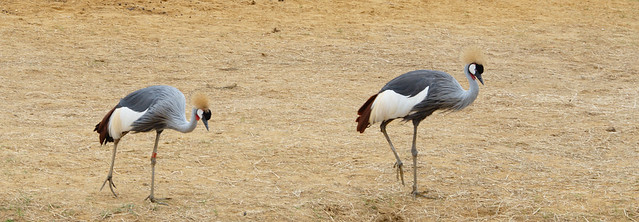Having discussed the two categories of people who owned the bulk of the land in the last two chapters Prestwich now moves on to discussing landownership itself (and the law surrounding it) and land management. He does this in two separate chapters, but I’ll cover them both in the same post (in part because it’s been a while since I read them).
Landownership and the Law
Who owned the land, who could inherit it and who had what rights associated with it were obviously important to the people of the time. Disputes frequently ended up in court, so a knowledge of the law and how to use it to your advantage were useful skills to acquire.
Prestwich first considers how people acquired land. Marriage was the easiest route, and there are many examples of men who acquired wealth by marrying well (Simon de Montfort for instance). As a result marriages often involved complicated arrangements about the transfer of land from father of the bride to groom, from groom to bride (as a dower) and jointures could be set in place to ensure that the land would be inherited by the children of the couple. It was also possible to gain land via royal favour – but this might not be as secure or long lasting as you might hope! Even if you stayed in the King’s good graces you might still end up giving the land back if the previous holder (or his heirs) made a good case for why they’d been wrongly disinherited.
And finally one could purchase land, or lease land. This wasn’t always a straightforward transfer of money in exchange for land. Prestwich details one purchase mechanism which was particularly unpopular – land that had been mortgaged to a Jewish moneylender could be bought by someone (often a religious house) paying off the debt. So the Church was in effect profiting from the practice of usury (these lands would not otherwise have been available to buy), which is somewhat hypocritical. Another way to buy land was to buy a reversion – on the death of the owner you would inherit rather than the owner’s heirs.
So given that the transfer of land could be complicated, and the relationships between landlord & tenant could be tense, it’s not surprising that lawyers were important in securing one’s rights. There also arose a practice of bringing a fictitious dispute to court, which then would be ruled on and the resulting documents would provide binding proof of land ownership. And during the period covered by this book the legal system surrounding landownership got increasingly complex – in part to counter various ways in which great landlords could lose income through the ways that their (lesser landlord) tenants disposed of their land. One practice legislated against was granting land to the Church – because the Church never died and never inherited whilst underage two sources of potential income were removed from a landowner (normally there would be fees to pay your landlord in such situations).
Another part of the complex legal situation surrounding landownership & use were the mechanisms to ensure that the land was inherited in the way the original (or current) owner intended even generations after his death. For instance the way that male & female inheritance worked meant that the practice of restricting inheritance “in tail male” arose. In the general case, if a landowner died and had no male heirs his estate would be divided between all his female heirs – thus an estate could fragment to a potentially unsustainable degree. So if the land was entailed such that it must be inherited only be a male heir, then in the event of a landowner only having daughters the estate would be kept together and go to the nearest male heir. Which would be bad for the daughters who now got nothing (although they were presumably supposed to marry and be reliant on their husband’s estate) but it did mean that a smallish estate wouldn’t disintegrate to a point where no-one could live off the proceeds. You could also control inheritance by granting your lands away to someone else, who would then permit you to use the lands for the rest of your life. And you’d set up the legal framework of the initial grant to ensure that the new owner was then required to permit your designated heir use for his life and so on. These enfeoffments could be for a limited term, for instance if you were going to war and wanted to ensure your affairs were properly taken care of in the event of your death in battle, but wanted control back if you returned alive.
Prestwich finishes this chapter by considering how well this complex legal system surrounding landownership actually worked in practice. He suggests that its very complexity might’ve been a part of the purpose. If there was always some other legal approach you could try in order to resolve your disputes, then conflict would be less likely to descend into violence.
The Management of Land
The point of owning land, and why it was worth pursuing through all the legal complexity, was to make a profit from it and live off that profit. And to do that the land must be managed. Prestwich starts this chapter by defining the two main ways to do this – either rent out the manors to people (or person) who pay a fixed rent or directly manage the land and take all the proceeds. (The distinction isn’t quite as clear as that sounds because even directly managed land had tenants who paid rent.)
Rents were generally fixed over long periods, so in times of higher inflation it made more sense to directly manage your land. This was the case during the late 12th Century and may explain why there had been a countrywide movement towards direct management of estates. During the 13th Century there was a steady level of inflation across the century, with a lot of short term fluctuation, so this might explain the continued preference for direct management. However Prestwich is dubious that long term price changes would have quite such an impact. Other factors influencing this include the fact that the Church preferred direct management (in part because farming out the land to monks had proved to leave too many of them away from the regulations of monastic life). The existence of a developed market economy at which to sell the surplus you were hoping to generate would also influence landowners to go for direct management. And of course if you take the profits in directly then you don’t risk having tenants fail to pay their rent, which then would require the costs of a court case to recover.
This was a period during which the methods of estate management were both revolutionised, and systematically taught. This meant that landlords choosing to directly manage their estates could employ stewards and bailiffs who were well trained and efficient. There was an extensive literature on the subject of estate management, which was widely disseminated – Prestwich discusses several treatises covering accountancy, farming practice and so on. These treatises also gave a landowner yardsticks by which to measure the performance of their steward. Accountancy appears to’ve been fairly well standardised by this time, the surviving records are remarkably similar across different sizes of properties and different regions of the country. Farming methods, however, varied by region – understandably so, as crops and livestock suitable for one area are not necessarily suitable for a different one. In general investment in an estate was geared to maximising returns in the short term rather than improving the estate.
The above is all about the 13th Century, but these good conditions could not last. War, poor harvests, and terrible weather are all things which began to change conditions from around 1290. There is also the possibility that the expansion of agriculture during the good times had started to exhaust the land in some estates. And so there was a gradual move towards leasing the land to tenants for the security of a fixed rent. Obviously any consideration of economic conditions in the first two-thirds of the 14th Century has to consider the Black Death in 1348. Whilst the immediate effects made life more difficult for landlords it seems they were able to work around these to some degree. For instance increased labour costs lead to landlords insisting on labour service from their peasant tenants instead of commuting it to a cash payment as had become customary. So during the period that is the scope of this book (up to 1360) the effects of the Black Death on the economy were mostly masked by short term fixes.

